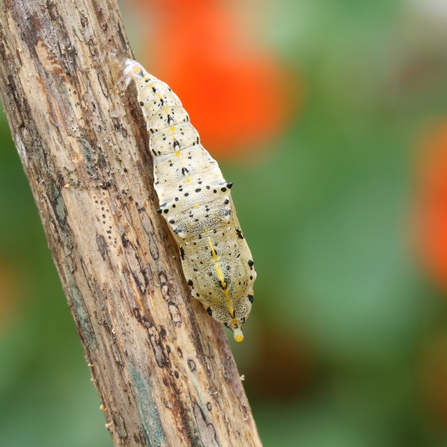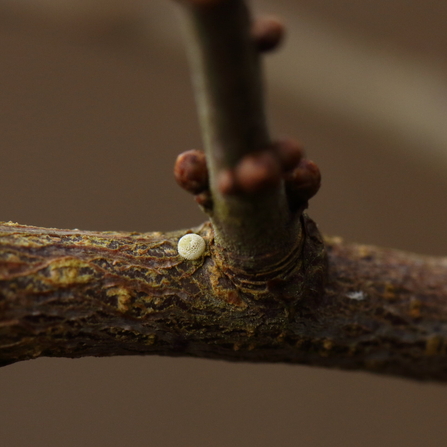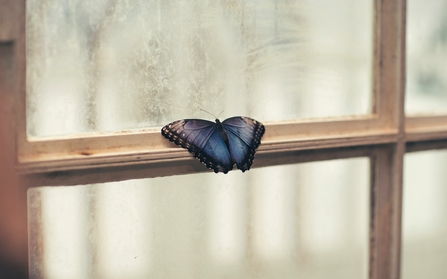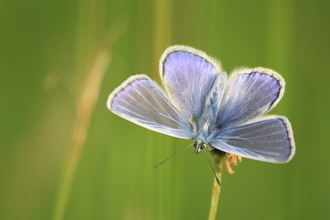Insects have their own version of hibernation, known as diapause. It’s basically like they push pause on their lifecycle, shutting down until conditions improve and they can become active again. They can do this at different stages – some might see out the winter as adults, pupae, larvae or even eggs.
Different butterflies (and moths!) have different winter survival strategies. Most shut down for the season, entering diapause as either an egg, a caterpillar, a pupa or an adult. Remarkably, painted ladies avoid the winter altogether by migrating south in autumn!
Larvae
Most of the UK’s butterflies and moths spend the winter in their larval form, as caterpillars. Some will just huddle down in leaf litter or clumps of grass below their favourite food plant. Others might create their own shelter to give them a little more protection. Large skipper caterpillars use silk to spin grass blades together, forming a tube they can hide in. Marsh fritillary caterpillars spend the winter together in a communal web.
Some species have much more elaborate plans. Blue butterflies have complex relationships with ants and the large blue is no exception. When caterpillars first hatch in summer they feed on leaves, but as they grow their tastes change. They drop to the floor and produce a sugary liquid that attracts ants. Then they mimic an ant larva, tricking the ants into carrying the caterpillar down into their nest. Once inside, they feed on ant grubs until they’re fully grown. This is where they’ll spend the winter, deep inside an ant nest. They’ll pupate in spring and the adult will crawl back outside.







